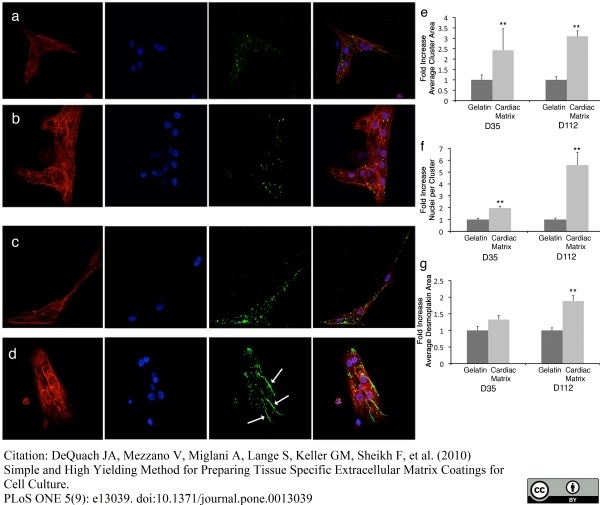Desmoplakin 1/2 antibody | DP-2.15



Mouse anti Desmoplakin 1/2
- Product Type
- Monoclonal Antibody
- Clone
- DP-2.15
- Isotype
- IgG1
- Specificity
- Desmoplakin 1/2
| Mouse anti Desmoplakin 1/2 antibody, clone DP-2.15 recognizes both desmoplakin 1 and 2 from stratified epithelia, simple epithelia including glands, urothelium, thymic reticular epithelium, hepatocytes, intercalated disks of myocardium and arachnoid cells of meninges. Mouse anti Desmoplakin 1/2 antibody, clone DP-2.15 can be used for the detection of primary and metastatic carcinomas. Mouse anti Desmoplakin 1/2 antibody, clone DP-2.15 recognizes the N terminus of the rod domain of desmoplakin ( Bornslaeger et al. 1996). |
- Target Species
- Human
- Species Cross-Reactivity
-
Target Species Cross Reactivity Bovine Chicken Mouse Rat - N.B. Antibody reactivity and working conditions may vary between species.
- Product Form
- Purified IgG - liquid
- Preparation
- Purified IgG prepared by affinity chromatography on Protein A from tissue culture supernatant
- Buffer Solution
- Phosphate buffered saline
- Preservative Stabilisers
- <0.1% Sodium Azide (NaN3)
- Immunogen
- Native bovine desmoplakin 1 and 2 purified from bovine snout desmosomes.
- Approx. Protein Concentrations
- IgG concentration 1mg/ml
- Fusion Partners
- Spleen cells from immunized Balb/c mice were fused with cells from the NS0 mouse myeloma cell line.
- Regulatory
- For research purposes only
- Guarantee
- 12 months from date of despatch
Avoid repeated freezing and thawing as this may denature the antibody. Storage in frost-free freezers is not recommended.
| Application Name | Verified | Min Dilution | Max Dilution |
|---|---|---|---|
| Immunofluorescence | |||
| Immunohistology - Frozen | |||
| Western Blotting |
References for Desmoplakin 1/2 antibody
-
Cowin, P. et al. (1985) The complement of desmosomal plaque proteins in different cell types.
J Cell Biol. 101 (4): 1442-54. -
Otten, J. et al. (2010) Complete loss of murine Xin results in a mild cardiac phenotype with altered distribution of intercalated discs.
Cardiovasc Res. 85 (4): 739-50. -
DeQuach JA et al. (2010) Simple and high yielding method for preparing tissue specific extracellular matrix coatings for cell culture.
PLoS One. 5 (9): e13039. -
Jheon, A.H. et al. (2011) PERP regulates enamel formation via effects on cell-cell adhesion and gene expression.
J Cell Sci. 124: 745-54. -
Chkourko, H.S. et al. (2012) Remodeling of mechanical junctions and of microtubule-associated proteins accompany cardiac connexin43 lateralization.
Heart Rhythm. 9 (7): 1133-1140.e6. -
Papageorgiou, I. et al. (2014) Interaction of micron and nano-sized particles with cells of the dura mater.
J Biomed Mater Res B Appl Biomater. 102 (7): 1496-505. -
Basheer, W.A. et al. (2015) Cardiomyocyte-specific overexpression of the ubiquitin ligase Wwp1 contributes to reduction in Connexin 43 and arrhythmogenesis.
J Mol Cell Cardiol. 88: 1-13. -
Park, D.S. et al. (2015) Genetically engineered SCN5A mutant pig hearts exhibit conduction defects and arrhythmias.
J Clin Invest. 125 (1): 403-12.
View The Latest Product References
-
Yung, H.W. et al. (2016) Placental endoplasmic reticulum stress in gestational diabetes: the potential for therapeutic intervention with chemical chaperones and antioxidants.
Diabetologia. 59 (10): 2240-50. -
Vila, J. et al. (2017) Structural and molecular pathology of the atrium in boxer arrhythmogenic right ventricular cardiomyopathy.
J Vet Cardiol. 19 (1): 57-67.
- RRID
- AB_619950
- UniProt
- P15924
- Entrez Gene
- DSP
- GO Terms
- GO:0001533 cornified envelope
- GO:0030674 protein binding, bridging
- GO:0005200 structural constituent of cytoskeleton
- GO:0006921 cellular component disassembly involved in apoptosis
- GO:0018149 peptide cross-linking
- GO:0030057 desmosome
- GO:0030216 keratinocyte differentiation
2722-5204
If you cannot find the batch/lot you are looking for please contact our technical support team for assistance.
Please Note: All Products are "FOR RESEARCH PURPOSES ONLY"
View all Anti-Human ProductsAlways be the first to know.
When we launch new products and resources to help you achieve more in the lab.
Yes, sign me up

